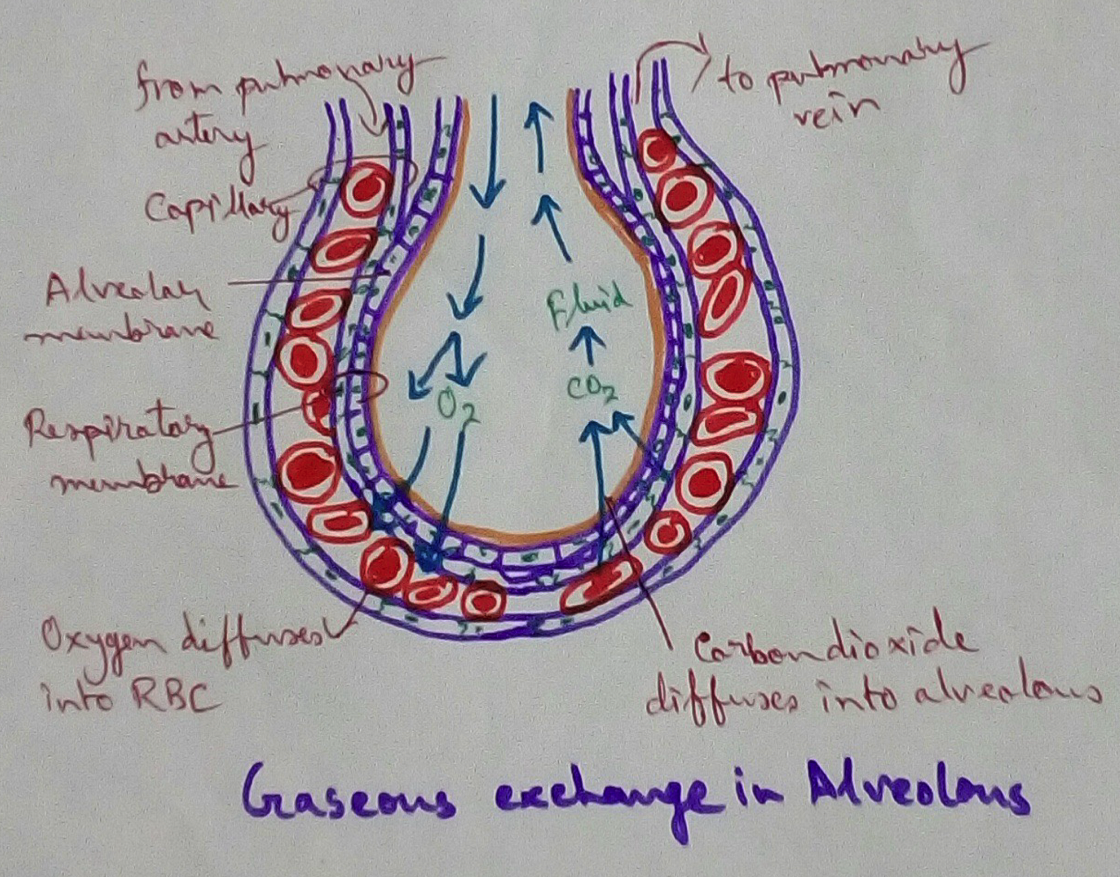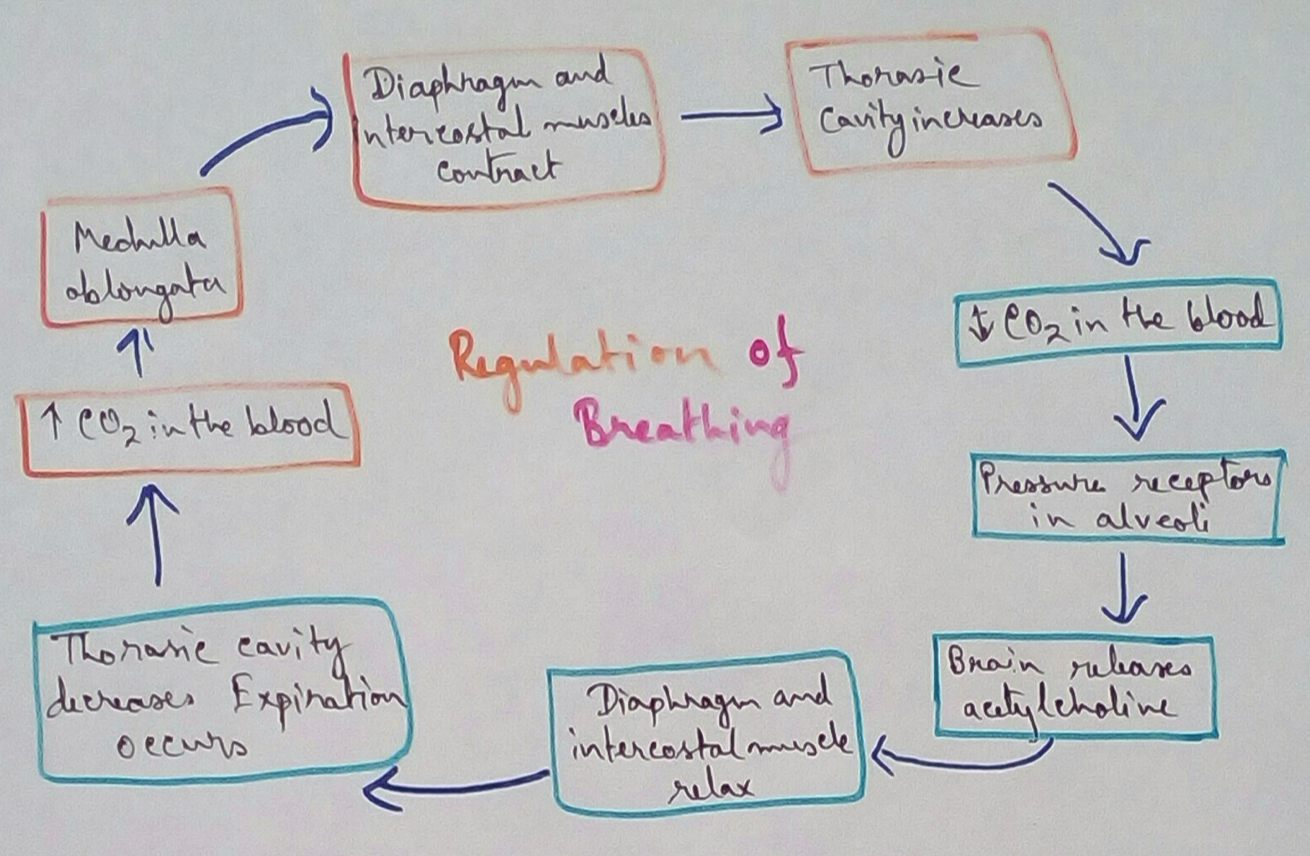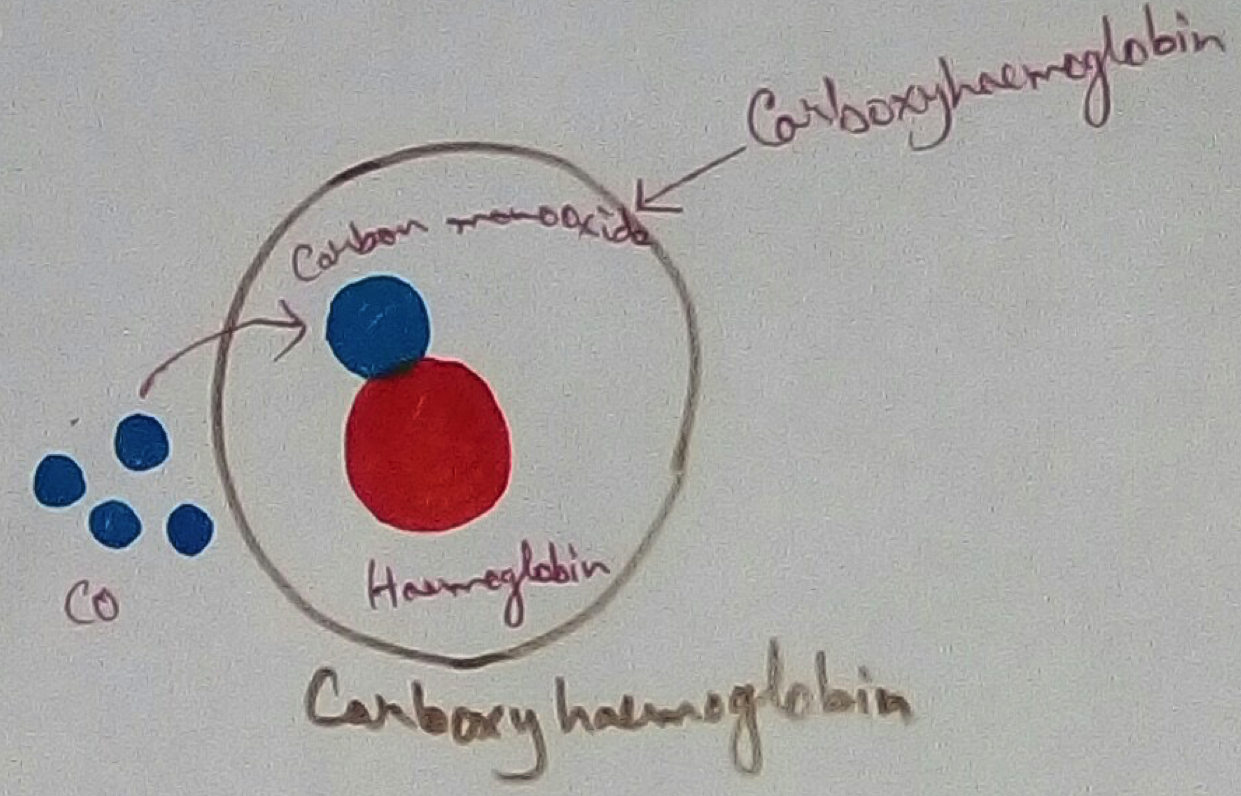Explain Transport of Gases
In humans gaseous exchange is completed in the following ways the steps are-
• External Respiration or Breathing - Breathing in false taking in of Oxygen and giving out of carbon dioxide in the body. Mechanism of breathing can be divided into two parts that is inspiration and expiration. Inspiration can be defined by the activity where there is involvement of intercostal muscles and the diaphragm chest etc. in this process there is entry of air takes place due to contraction of intercostal muscles pulling upward and outward of the leaves and the contracts and patterns of the diaphragm and the increase of chest cavity. As a result of which pressure is decreases and air is drawn in. release of air into the environment from the body is known as the expiration and the muscles that involve during expiration are intercostal muscles leaves diaphragm chest cavity etc. During expiration intercostal muscles are relaxed reels move downward and inward when the diaphragm relaxes and it becomes dome shaped again the chest cavity decreases and the pressure increases by which the air is ultimately expelled out.
• Transport of Gases - Gaseous transport of transport of gases by the walls of alveoli in the lungs and that covered by the blood capillaries. In this process oxygen is observed by the RBCs that is present in the blood are in the blood capillaries from elderly and the red blood corpuscles contain hemoglobin which combines with oxygen to form of oxyhaemoglobin. Carbon dioxide that produced due to the metabolism of the food in the lungs and different tissues are carried by the veins in the blood by the two major ways- major portion of the carbon dioxide is transported and dissolved in plasma as bicarbonates where as there is partly in combination with hemoglobin which is present in red blood corpuscles as carbaminohemoglobin. Then it is transported via blood means deoxygenated blood to the kidney.
• Tissue respiration - Tissue respiration is observed in the blood capillaries that transport the oxygen to the all cells in the body by the process of diffusion through their thin walls and they also pick up the carbon dioxide from the cells. Bheem this carbon dioxide is sent to the respiratory part for expiration.
• Cellular Respiration - Cellular respiration is the internal part of the respiration which is observed to be offered by the activity of the different enzymes causing the chemical change or conversion of the compound. It converts complex food into simple and releases the energy for the activity or working purpose.
• Explanation of the Gaseous Exchange -
Transport of Oxygen - Oxygen carrying capacity of blood is 20 ml for 100m but 3% of dissolved in plasma and 97% of the oxygen combines with haemoglobin to form a loose reversible Complex called oxyhaemoglobin and is transported from one tissue to another via blood. One molecule of haemoglobin has four iron ions and each of which can pick up a molecule of oxygen it also contains porphyrin ring and globin protein. Degree of saturation of haemoglobin with oxygen is dependent upon the oxygen tension or partial pressure of oxygen called PO 2. Relationship between the oxyhaemoglobin saturation and oxygen tension ka is called oxygen dissociation curve and it is sigmoid in shape but for myoglobin of muscle the oxygen dissociation curve is hyperbole in nature. Oxygen haemoglobin dissociation curve is observed to be shifts to right by increasing the hydrogen ion concentration ,carbon dioxide tension, temperature and these phosphoglycerate concentration of erythrocyte. Thus these things are considered to be the factors that affect the dissociation curve and its shifts from two hours right by increasing hydrogen ion concentration. Hemoglobin for oxygen. This things or if it is called Bohr effect as scientist Bohr from this things and oxygen haemoglobin dissociation curve is shifted due to the changes in that carbon dioxide level within the body.
Haldane Effect - Haldane effect is a theme where it has been showed that oxyhaemoglobin functions as an acid and it decreases pH of blood increases hydrogen ion concentration number and convert it to bicarbonate ion and then again that bicarbonate Ion to water molecule and carbon dioxide molecule.
Transport of Carbon Dioxide - Transport of carbon dioxide is the second part of the gaseous exchange of respiratory system. As it is proved that almost 7% of the dissolved carbonic acid is transported in this form and 70% as bicarbonate from form and 23% as carbaminohemoglobin form within the blood. Carbon dioxide is an excretory product which is produced due to metabolism of the food inside the body and it should be removed from the blood outside the body unless it may produces carbonic acid and make the blood more acidic. Consequently its partial pressure of carbon dioxide is the highest in tissue and carbon dioxide diffuses into tissue fluid and from there into blood in blood carbon dioxide is transported in the four forms. The four forms of carbon dioxide that transported in the blood are-
In plasma - Carbon dioxide reacts with water molecule to produce carbonic acid and in the next step sodium carbonate reacts with water molecules and carbon dioxide to produce Sodium Bicarbonate.
In Erythrocytes - In erythrocytes most of the carbon dioxide is passed into any three sides which is a major part almost nearly 70% of the forms of carbonic acid and then Bicarbonate.
A sizable portion of bicarbonate ions passes out into the Plasma in return for Chloride and this is called chloride shift. This phenomenon is also known as hamburgers phenomena is chloride pump is involved for this process and the remaining of the chloride combines with potassium ions to form potassium chloride. Almost 23% of the carbon dioxide that forms by the tissue form a complex with the amino acid proteins which is the part of haemoglobin known as carbaminohemoglobin compound. Within the lungs the complex are broken down to release carbon dioxide and the oxyhaemoglobin donates hydrogen ions which is called Haldane effect and it combined with bicarbonate to form carbonic acid. Letter it dissociates to produce carbon dioxide within the tissue.
From Explain Transport of Gases to HOME PAGE
Recent Articles
-
What Is Plasma? | Blood Plasma | Proteins | Nutrients | Cholesterol
Nov 07, 25 10:29 AM
Blood is a mobile fluid which is a connective tissue and is derived from the mesoderm like cell any other connective tissue. Colour of blood is reddish and that flows inside the blood vessels by means… -
Disorders of Respiratory System | Tuberculosis | Pleurisy | Emphysema
Oct 28, 25 11:39 PM
Tuberculosis is very common disease and is caused by a type of bacteria called Mycobacterium tuberculosis. This disease causes different trouble in the respiration and infection of several parts of th… -
Regulation of Respiration | Respiratory Centres | Inspiratory Area |
Oct 14, 25 12:13 AM
Respiratory Centre is the area that controls the rate of respiration and it is observed to be located in medulla oblongata and pons. Respiratory Centre has the following will dispersed components like… -
Explain Transport of Gases | External Respiration | Tissue Respiration
Oct 09, 25 11:35 PM
In humans gaseous exchange is completed in the following ways the steps are - External Respiration or Breathing - Breathing in false taking in of Oxygen and giving out of carbon dioxide in the body. M… -
Kind and Number of Teeth | Location of Teeth in Mouth | Care of Teeth
Sep 11, 25 12:52 AM
Kind and Number of Teeth








New! Comments
Have your say about what you just read! Leave me a comment in the box below.